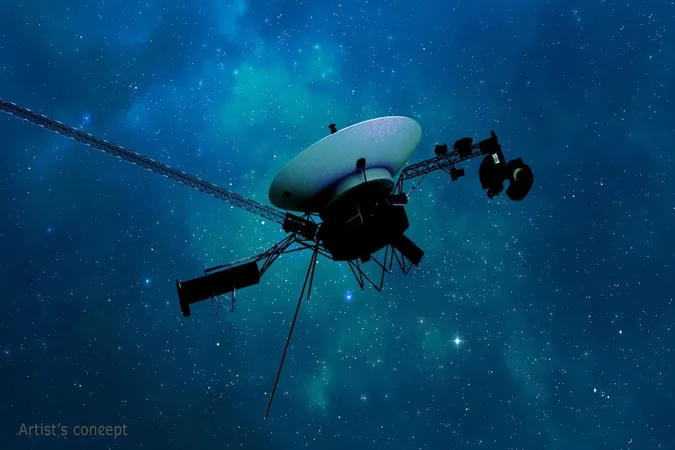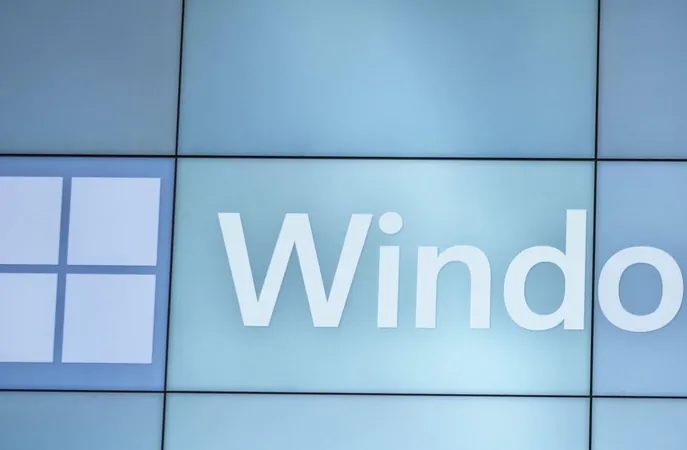
Voyager 1 Resurfaces After Communication Breakdown – What Does This Mean for Interstellar Exploration?
2024-11-27
Author: Wei
Voyager 1 Resumes Communication
After a concerning silence, NASA’s Voyager 1 spacecraft has resumed its vital operations, sending waves of relief among scientists and space enthusiasts alike. This remarkable mission has been an interstellar trailblazer since its launch in 1977, and recent communication problems had put its extraordinary journey at risk.
Communication Breakdown
In late October, engineers noticed a significant issue when Voyager 1 unexpectedly switched off its primary X-band transmitter. This setback forced the team to rely on its backup, the S-band transmitter, which is not only weaker but also hasn’t been operational since 1981. Fortunately, recent efforts by the mission team have successfully restored the primary transmitter, allowing Voyager to start relaying crucial data again from its four active science instruments.
Distance and Challenges
At a staggering distance of 15 billion miles (approximately 24 billion kilometers) from Earth, Voyager 1 is indeed venturing into uncharted territory. The spacecraft had already crossed the boundary of our solar system, becoming the very first human-made object to enter interstellar space. However, the prolonged silence hinted at the operational challenges the team faces, as maintaining contact with such a distant spacecraft becomes increasingly complicated.
Power Management Issues
The communication breakdown stemmed from a safety feature kicks in when the spacecraft's energy levels drop. During an episode where one of Voyager's heaters was activated, its fault protection system wrongly assessed the situation and decided to shut down its X-band transmitter to conserve power. This is particularly critical as the power source, consisting of decaying plutonium, diminishes approximately by 4 watts each year, necessitating the shutdown of non-essential systems.
Engineering Ingenuity
Despite the difficulties, the engineering team has shown remarkable ingenuity in keeping Voyager 1 operational. Recently, they switched to a different set of thrusters, carefully navigating around years of accumulated dust and debris, a testament to their resourcefulness. Just earlier this year, they also addressed another communication glitch that had caused garbled transmissions, ensuring that data flow from the intrepid probe remained unbroken.
Scientific Contributions of Voyager 1
Voyager 1 is more than just a long-distance envoy; it's a continues source of groundbreaking scientific information. During its earlier years, the spacecraft provided critical insights during flybys of Jupiter and Saturn, uncovering new moons and revealing previously unknown features such as a new ring around Saturn. In an era where exploration beyond our own planet is more crucial than ever, Voyager 1 stands as a symbol of human curiosity and resilience in the face of overwhelming odds.
Future of the Voyager Mission
As Voyager 1 marches further into the cosmos, the mission team is committed to maximizing the lifespan of this venerable spacecraft. The successful reactivation of its communications marks a vital milestone, but the road ahead remains fraught with challenges. How much longer can this iconic probe keep transmitting information back to Earth? The quest continues, and scientists around the globe remain eager to listen as Voyager 1 shares its secrets from the brink of interstellar space.




 Brasil (PT)
Brasil (PT)
 Canada (EN)
Canada (EN)
 Chile (ES)
Chile (ES)
 España (ES)
España (ES)
 France (FR)
France (FR)
 Hong Kong (EN)
Hong Kong (EN)
 Italia (IT)
Italia (IT)
 日本 (JA)
日本 (JA)
 Magyarország (HU)
Magyarország (HU)
 Norge (NO)
Norge (NO)
 Polska (PL)
Polska (PL)
 Schweiz (DE)
Schweiz (DE)
 Singapore (EN)
Singapore (EN)
 Sverige (SV)
Sverige (SV)
 Suomi (FI)
Suomi (FI)
 Türkiye (TR)
Türkiye (TR)